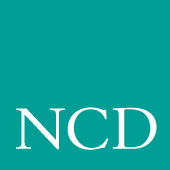

1
Introduction
Overview
NCD Network Computers (NC) support the X Window system, ICA protocol for PC application access, local terminal emulators, and a local Netscape NC Navigator browser. The X Window System provides a way to view several textual or graphical applications on a single display. X windows are an industry standard that has been ported to many platforms. Applications that run on X windows are insulated from differences in the underlying operating system; they behave exactly the same on any X-supported platform.
The Netscape NC Navigator browser is a direct port of the Netscape Navigator browser that runs on a Sun Solaris operating system. The Navigator browser allows users to access Web pages and to download Java applets for local execution.
Network Computer Environment
NCD Network Computers support a distributed computing environment, where processing can be shared by one or more of host computers rather than by one centralized computer. This allows applications competing for resources at any given time to be parceled out across the network, so they have minimum impact on each other. The hosts are connected by a network, which allows files to be transferred among computers and also allows processes on different computers to communicate with each other.
Several NCs can also be linked to each of the host computers over the network. Because the connections are not hardwired, a network computer can easily communicate with any host on the network. As in the host-to-host case, the network computer-to-host link allows the network computer to send and receive files over the network and to establish communication between processes running on the network computer and on the host.
X System Model for the NC
In X terminology, an application process is called a client and the process that controls the display is called a server. Figure 1-1 shows the X Window System client-server model, often referred to as core X. The client communicates with the server via a byte stream, sending X requests and receiving X events from the server.
The client and server do not necessarily run on the same host. They often communicate over a network, as shown in Figure 1-1. An X server can listen to several clients at once, providing input and displaying output for each in a separate window. A collection of simultaneously executing X clients is called a session. If necessary, each client can run on a different host, spreading the load across the system for the most efficient use of available resources.
Figure 1-1 X System Model for the NC
Once the system has been set up, the network is totally transparent. The X software cannot tell the difference between local clients, that is, applications running on the same host as the server, and remote clients running on other hosts. When the proper defaults are in place, users cannot tell the difference, either.
Network Computer Software
This section provides an overview of the NCBridge software used for booting and running XP and NC series network computers. The software comes on CD-ROM discs (also on magnetic tape for VMS only). The media contain boot files (the X server image), configuration files, fonts, and font tools to support network computers. Files with .900 extensions (*.900) support NC900 series network computers and so on, as shown in Table 1-1
X Server
The software environment is the X Window System, Version 11, Release 6. The X server monitors input from the keyboard and mouse, and sends output to the display. The server software is available in two options:
Local Clients
Most X applications (clients) run on a host computer, but some local clients can run on an NCD network computer. Depending on the type of network computer, the following local clients are available:
- Setup provides a user interface for setting up and viewing network computer configuration parameters and running utilities such as ping.
- Motif Window Manager provides a local window manager.
- XP Window Manager provides a local window manager.
- HostMenu provides a list of available login hosts.
- Low Memory Indicator displays an alert if available memory falls below a specified limit.
- Xlock provides a way to lock a network computer's keyboard only, or the keyboard and display.
- Input Configuration Manager configures a variety of input devices, such as lightpens and tablets.
- Navio, Netscape, Netscape_Lite clients are web browser clients. Netscape_Lite is the same as Netscape minus email and news functions.
- TeemX clients for IBM 3270E and 5250 Emulators (latest emulators).
- 3270 Emulator and 3278 Emulator printer emulator client (older emulators).
- Session Clients support these sessions:
Telnet VT220 or VT340, LAT VT220 or VT340, CTERM VT220 or VT340, Serial (TIP) VT220 or VT340, and CSLIP.- Client Launcher provides a way to start local clients by selecting clients from a menu.
- Analog Video Player displays analog video sources on a network computer.
- Digital Video Player displays digital video files on a network computer.
- Audio Player provides a way to record and play audio files on a network computer.
- Audio Mixer provides a way to record and play several audio sources.
- Authorization Key Manager provides a way to update the authorization keys of several network computers at once.
- Touchscreen Calibration client provides a graphical interface for calibrating the Trident Touchscreen.
- XClock client for displaying current time from time-server host.
- WinDD client that allows you to access Windows applications from Windows NT hosts.
- Llogin client provides LAT login sessions.
- Lfm client allows saving files from a host to an optional local floppy drive.